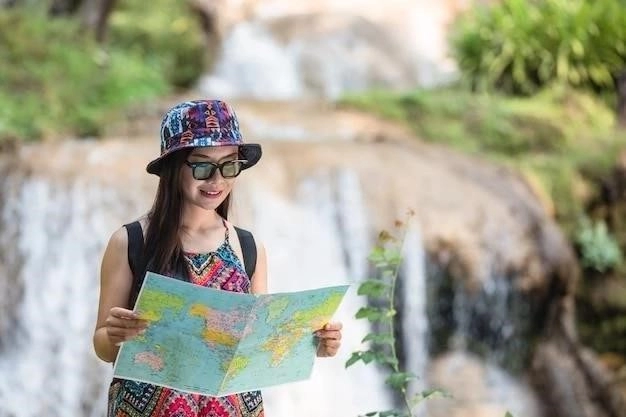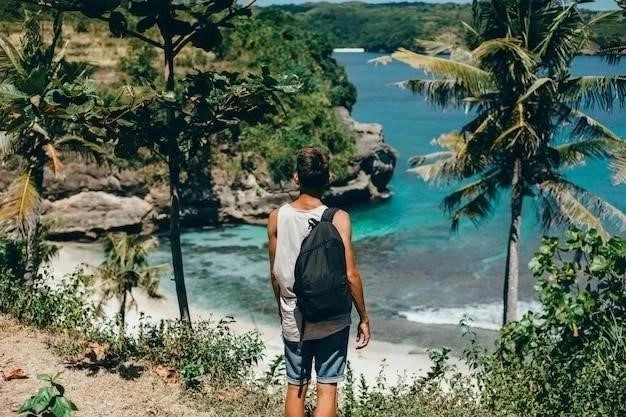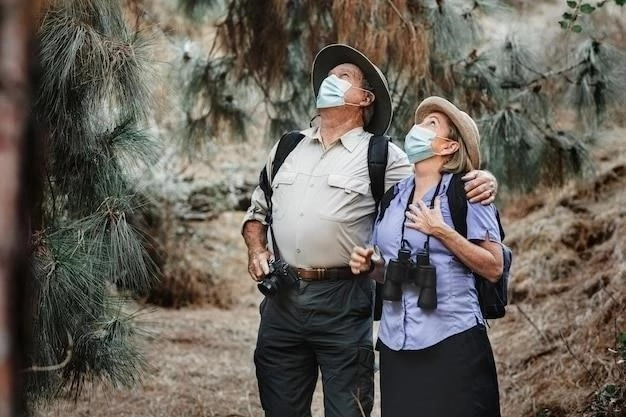Micronesia Travel Guide 2024
Welcome to a comprehensive guide designed to assist you in planning your ideal journey to Micronesia.
Planning Your Trip
Embarking on a journey to Micronesia requires meticulous planning to ensure a seamless and enriching experience. This enchanting archipelago, scattered across the vast expanse of the Pacific Ocean, offers a tapestry of cultural treasures, pristine natural beauty, and unparalleled tranquility.
Begin by delving into the diverse offerings of each island group within Micronesia. From the vibrant marine ecosystem of Palau to the ancient ruins of Nan Madol in Pohnpei, each destination boasts unique attractions. Consider your interests, whether diving amidst coral reefs, exploring historical sites, or immersing yourself in local traditions, to curate an itinerary that aligns with your passions.
Research and book accommodations well in advance, as options can be limited, especially during peak seasons. Explore various lodging possibilities, from luxury resorts to charming guesthouses, to find the perfect fit for your budget and preferences.
Engage with reputable travel agents specializing in Micronesia for invaluable guidance and personalized recommendations. They can provide insider tips, arrange domestic transportation, and navigate the intricacies of inter-island travel, ensuring a seamless and unforgettable voyage.
Best Time to Visit
Micronesia, with its tropical climate, offers pleasant weather year-round, yet understanding the nuances of each season can significantly enhance your travel experience. The dry season, spanning from December to March, presents the most favorable conditions for exploration, with lower humidity and minimal rainfall. This period witnesses an influx of tourists, so securing accommodations and flights in advance is highly recommended.
For those seeking a more tranquil ambiance and potentially lower prices, the shoulder seasons of April to May and September to November offer a compelling alternative. While rainfall increases slightly during these months, it rarely disrupts travel plans and often arrives as refreshing afternoon showers.
The wet season, from June to August, sees higher humidity and a greater chance of precipitation. However, this period coincides with fewer crowds and the opportunity to witness lush landscapes in their full glory. Divers may find this time particularly rewarding, as the seas are generally calmer, offering enhanced visibility for underwater exploration.
Ultimately, the best time to visit Micronesia depends on your individual preferences and priorities. Whether you seek sunny skies, cultural events, or underwater adventures, a careful consideration of seasonal variations will ensure an unforgettable journey through this Pacific paradise.
Visa Requirements and Entry Formalities
Navigating the entry requirements for Micronesia is essential for a smooth and enjoyable trip. Citizens of the United States enjoy unique privileges, allowed to enter and reside in the Federated States of Micronesia (FSM) indefinitely. However, it is still advisable to carry a valid passport with at least six months of validity remaining beyond your intended stay.
Citizens of most other countries are generally granted a 30-day tourist visa upon arrival in the FSM, provided they possess a valid passport with at least six months of validity remaining and a return ticket. Extending your stay is possible, with a maximum extension of up to 90 days, by applying at the Immigration Office in Pohnpei.

For visits exceeding 90 days or for purposes other than tourism, such as work or study, securing the appropriate visa in advance is mandatory. Contacting the nearest embassy or consulate of the Federated States of Micronesia is crucial for obtaining accurate and up-to-date visa information specific to your nationality and purpose of travel. Always initiate the visa application process well in advance of your planned departure date to avoid any potential complications.
Getting There and Around
Reaching Micronesia entails traversing the vast expanse of the Pacific Ocean, primarily through air travel. Major international airlines offer flights to key destinations within the region, including Guam International Airport (GUM) and Pohnpei International Airport (PNI). These hubs serve as gateways to the wider Micronesian archipelago, with connecting flights operated by regional carriers.
Guam, a U.S. territory, provides convenient access with frequent flights from major cities in Asia, North America, and Australia. Pohnpei, the capital of the Federated States of Micronesia, receives direct flights from Honolulu, Hawaii, and Manila, Philippines.
Navigating between islands within Micronesia typically involves a combination of flights and ferry services. United Airlines, operating as Micronesia Air, provides inter-island flights, connecting major destinations such as Chuuk, Kosrae, Yap, and Palau. Ferry services, while more limited in frequency, offer a scenic and immersive way to experience the beauty of the Pacific Ocean.
Within the islands, transportation options include rental cars, taxis, and public buses. Rental cars offer flexibility for exploring at your own pace, particularly in larger islands like Guam and Pohnpei. Taxis are readily available in urban areas, while public buses provide an economical means of transport, albeit with limited routes and schedules.

Accommodation
Micronesia offers a diverse array of accommodations, catering to a wide range of budgets and preferences. From luxurious beachfront resorts to charming locally owned guesthouses, travelers will find suitable lodging options throughout the islands.
In popular tourist destinations like Guam and Palau, international hotel chains provide familiar amenities and a high standard of service. These establishments often feature swimming pools, restaurants, and spas, offering a comfortable and indulgent stay. For those seeking a more intimate and culturally immersive experience, consider opting for smaller, family-run guesthouses or bed and breakfasts. These accommodations provide an opportunity to interact with locals and gain a deeper understanding of Micronesian hospitality.
For travelers venturing to more remote islands, options may include simple bungalows or eco-lodges. While these accommodations may offer fewer frills, they provide a unique opportunity to connect with nature and experience the tranquility of island life.
Regardless of your chosen accommodation, booking in advance, especially during peak seasons, is highly recommended to secure your preferred choice and avoid any last-minute disappointments.

Exploring the Islands
Micronesia, a tapestry of over 600 islands scattered across the western Pacific Ocean, unveils a world of unparalleled natural beauty and cultural richness. Exploring these islands is an adventure in itself, offering a diverse range of experiences that cater to every traveler’s desires.
For those drawn to the underwater realm, Micronesia is a sanctuary for divers and snorkelers. Plunge into the crystal-clear waters of Palau, renowned for its exceptional marine biodiversity, and witness a kaleidoscope of coral reefs, vibrant fish species, and even World War II wrecks. Chuuk Lagoon, a haunting underwater graveyard of Japanese warships, offers a poignant glimpse into history.
Beyond the ocean’s embrace, venture inland to discover ancient ruins and lush landscapes. On the island of Pohnpei, explore the enigmatic ruins of Nan Madol, a UNESCO World Heritage Site, its basalt structures rising from the sea, whispering tales of a lost civilization. Hike through the verdant rainforests of Kosrae, home to cascading waterfalls and endemic bird species.
Engage with the warmth and hospitality of the Micronesian people, attending traditional ceremonies and festivals to witness vibrant dances, captivating chants, and intricate crafts. Whether exploring the islands by boat, plane, or foot, a journey through Micronesia promises unforgettable encounters with nature, culture, and the indomitable spirit of the Pacific.

Guam
Guam, the largest and most populous island in Micronesia, welcomes visitors with a captivating blend of ancient Chamorro culture, Spanish colonial heritage, and modern American influences. As a U.S. territory, Guam offers the familiarity of American customs and conveniences while retaining a distinct island charm.
Begin your exploration in Hagåtña, the island’s capital, where Spanish colonial architecture graces the streets and historical landmarks, such as the Dulce Nombre de Maria Cathedral-Basilica and Fort Santa Agueda, stand as testaments to a bygone era. Immerse yourself in Chamorro culture at the Guam Museum, showcasing the island’s rich history and traditions.
Venture beyond the urban center to discover Guam’s natural splendor. Relax on the pristine shores of Tumon Bay, renowned for its turquoise waters and gentle surf, perfect for swimming, sunbathing, and water sports. Explore the underwater world at the Gab Gab Beach, a prime snorkeling spot teeming with colorful marine life.
For a glimpse into Guam’s wartime past, visit the War in the Pacific National Historical Park, which preserves sites related to World War II, including memorials, gun emplacements, and the poignant Asan Bay Overlook. From its rich history to its natural beauty, Guam offers a captivating experience for every traveler.
Palau
Palau, an archipelago of over 500 emerald-green islands scattered across the turquoise waters of the Pacific, is a diver’s paradise and a haven for nature enthusiasts. Renowned for its pristine marine ecosystem, Palau boasts a breathtaking underwater world teeming with life.
Dive into the legendary waters of the Rock Islands Southern Lagoon, a UNESCO World Heritage Site, and witness an unparalleled spectacle of marine biodiversity. Glide through gardens of vibrant coral reefs, encounter majestic manta rays gliding through the depths, and marvel at schools of colorful fish darting amidst the coral formations.
Venture to Jellyfish Lake, a marine lake home to millions of harmless golden jellyfish, and experience the surreal sensation of swimming amidst these pulsating creatures. Explore the ethereal beauty of the Blue Corner, a world-famous dive site known for its strong currents and abundant marine life, attracting sharks, rays, and schools of pelagic fish.

Beyond its underwater treasures, Palau offers cultural immersion and natural wonders above the surface. Visit the Belau National Museum to delve into the archipelago’s rich history and traditions. Hike to the Ngardmau Waterfall, cascading through lush rainforest, or kayak through the serene waterways of the Rock Islands, marveling at the unique mushroom-shaped formations.
Federated States of Micronesia
The Federated States of Micronesia (FSM), an archipelago of over 600 islands scattered across the western Pacific, offers a glimpse into a world untouched by mass tourism. Comprising four distinct states – Yap, Chuuk, Pohnpei, and Kosrae – the FSM presents a tapestry of cultural traditions, historical intrigue, and pristine natural beauty.
Journey to Yap, renowned for its unique stone money and traditional navigation techniques. Witness the Yapese people’s deep connection to the sea as they skillfully maneuver their hand-carved canoes, navigating by the stars and currents.
Explore the underwater wonders of Chuuk Lagoon, a haunting reminder of World War II. Dive into history as you explore the wrecks of Japanese warships, now encrusted with coral and home to a myriad of marine life.
On the island of Pohnpei, immerse yourself in the mysteries of Nan Madol, a UNESCO World Heritage Site. Explore the ancient ruins of this once-thriving city, its basalt structures rising from the sea, whispering tales of a lost civilization.
Discover the lush rainforests and cascading waterfalls of Kosrae, a haven for hikers and nature enthusiasts. Trek through the dense jungle, encounter endemic bird species, and cool off in the refreshing waters of the Sipyen Waterfall.

Culture and Etiquette
Micronesia, a tapestry of diverse cultures and traditions, welcomes visitors with warmth and hospitality. Understanding and respecting local customs is paramount to ensuring a harmonious and enriching travel experience.
Family holds a central place in Micronesian society, and elders are deeply revered. When greeting someone, a simple smile and a handshake suffice, and addressing individuals with a respectful “Mr.” or “Mrs.” followed by their last name is customary.
Modesty in dress and demeanor is highly valued. When visiting villages or attending traditional ceremonies, opt for conservative attire that covers the shoulders and knees. Removing your shoes before entering homes and places of worship is a sign of respect.
Gift-giving is a cherished tradition in Micronesia, symbolizing friendship and gratitude. Small tokens of appreciation, such as food, handicrafts, or personal items, are always well-received. When attending social gatherings, it is polite to bring a small gift for the host.
Direct eye contact can sometimes be perceived as confrontational, so maintaining a respectful gaze and avoiding excessive hand gestures is advisable. Remember that patience and a genuine interest in Micronesian culture will be met with warmth and appreciation.
Food and Drink
Micronesian cuisine is a delightful fusion of Polynesian, Asian, and Western influences, reflecting the islands’ rich history and cultural diversity. Fresh seafood takes center stage, with tuna, mahi-mahi, and reef fish featuring prominently in many dishes.
One of the most iconic Micronesian delicacies is kelaguen, a flavorful dish made with diced raw fish marinated in citrus juices, coconut milk, and spices. Another must-try is laulau, a traditional Polynesian dish of meat and vegetables wrapped in banana leaves and steamed to tender perfection.
Coconut, a ubiquitous ingredient in Micronesian cuisine, appears in countless forms, from creamy coconut milk to sweet coconut candy. Breadfruit, taro, and yams provide starchy staples, while tropical fruits, such as mangoes, papayas, and pineapples, offer refreshing bursts of flavor.
For beverages, indulge in refreshing coconut water straight from the fruit or sample tuba, a mildly alcoholic drink made from fermented coconut sap. Local beers, such as Red Horse and San Miguel, are popular choices, while kava, a traditional drink made from the root of the kava plant, is known for its relaxing effects and cultural significance.
Health and Safety
While Micronesia offers a relatively safe and welcoming environment for travelers, prioritizing health and safety precautions is essential for a smooth and enjoyable journey.
Before embarking on your trip, consult with your healthcare provider regarding recommended vaccinations and necessary health precautions. Hepatitis A and B, typhoid fever, and tetanus-diphtheria are generally recommended, while malaria prophylaxis may be advised for certain islands.
Pack a comprehensive travel health kit containing essential medications, insect repellent, sunscreen, and first-aid supplies. Staying hydrated is crucial, especially in the tropical climate, so drink plenty of bottled water and avoid consuming tap water unless it has been boiled or purified.
Micronesia is generally a safe destination with a low crime rate. However, exercising common sense and taking precautions to protect yourself and your belongings is always prudent. Avoid displaying large sums of cash, secure valuables in your accommodation’s safe, and be mindful of your surroundings, particularly at night.
When engaging in water activities, such as swimming, snorkeling, or diving, exercise caution and be aware of potential hazards, such as strong currents, marine life, and coral reefs. Always swim or dive with a buddy and inform someone of your whereabouts.

Responsible Tourism
Embracing responsible tourism practices is essential to preserving the pristine beauty and cultural heritage of Micronesia for generations to come. As a visitor to these islands, your actions can have a significant impact, both positive and negative, on the environment and local communities.
Respect the delicate marine ecosystem by practicing responsible diving and snorkeling. Avoid touching or standing on coral reefs, as even slight contact can cause damage. Use reef-safe sunscreen to prevent harmful chemicals from leaching into the water.
Minimize your environmental footprint by conserving resources whenever possible. Opt for reusable water bottles and bags, reduce waste by choosing products with minimal packaging, and conserve energy by turning off lights and air conditioning when leaving your accommodation.
Support local businesses and communities by purchasing authentic handicrafts, dining at locally owned restaurants, and choosing accommodations that prioritize sustainable practices. Engage with local guides and tour operators to ensure that your tourism dollars directly benefit the communities you visit.
Educate yourself about Micronesian culture and customs to ensure respectful interactions with local people. Ask permission before taking photographs of individuals and refrain from giving money or gifts to children, as this can create a culture of dependency.
Money-Saving Tips
While a journey to Micronesia offers unparalleled experiences, savvy travelers can explore this Pacific paradise without breaking the bank. By implementing a few strategic money-saving tips, you can stretch your travel budget and enjoy an unforgettable adventure.
Consider traveling during the shoulder seasons (April to May and September to November) when airfares and accommodation rates tend to be lower than during peak season. The weather during these months is still pleasant, with occasional showers that rarely disrupt travel plans.
Embrace local cuisine and dine at family-run restaurants and food stalls, where you can savor authentic Micronesian flavors at a fraction of the cost of tourist-oriented establishments. Explore local markets for fresh produce and snacks, offering a taste of local life and budget-friendly options.
Opt for accommodation options that align with your budget. Consider staying in guesthouses or homestays, which often provide a more intimate and culturally immersive experience at lower rates than large hotels.
Take advantage of free activities and attractions. Explore the natural beauty of the islands by hiking, swimming, or snorkeling, all of which can be enjoyed at no cost. Visit local villages and immerse yourself in Micronesian culture through interactions with friendly locals.










